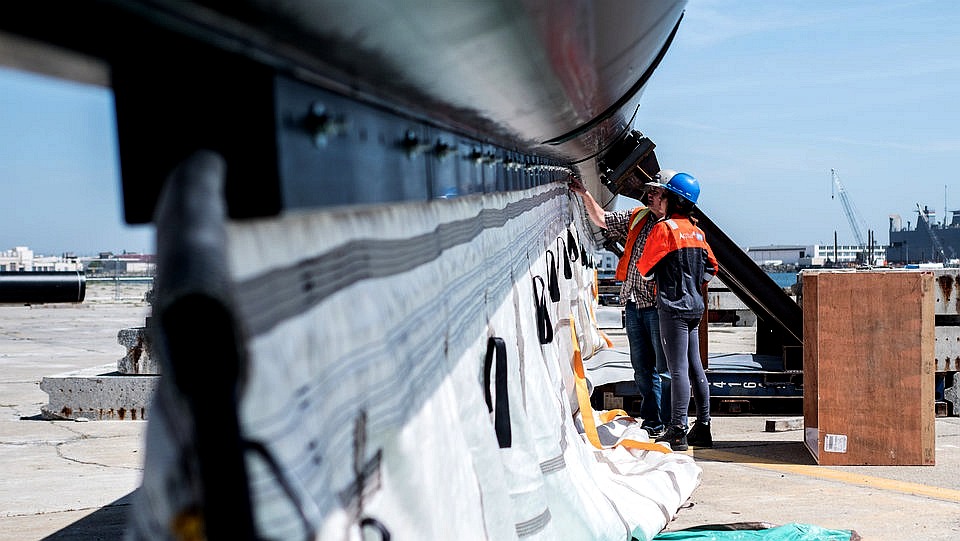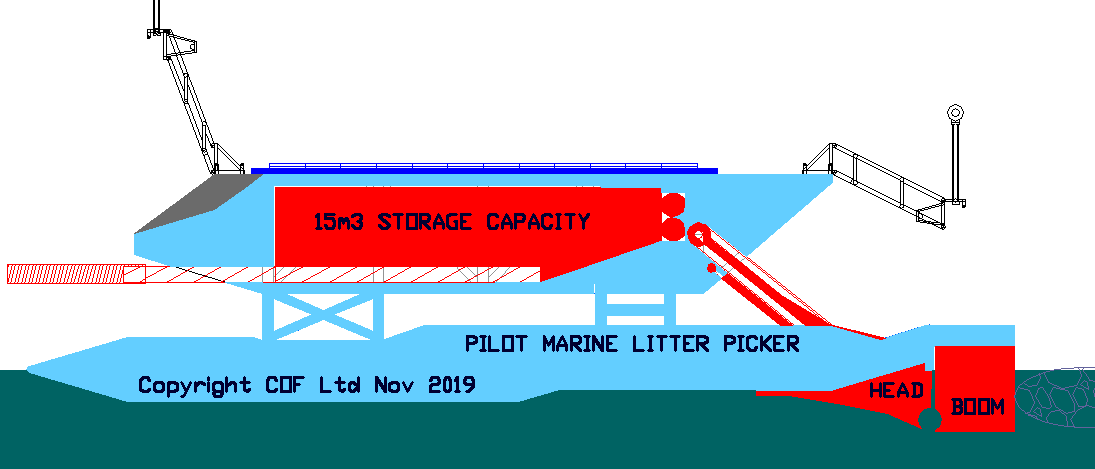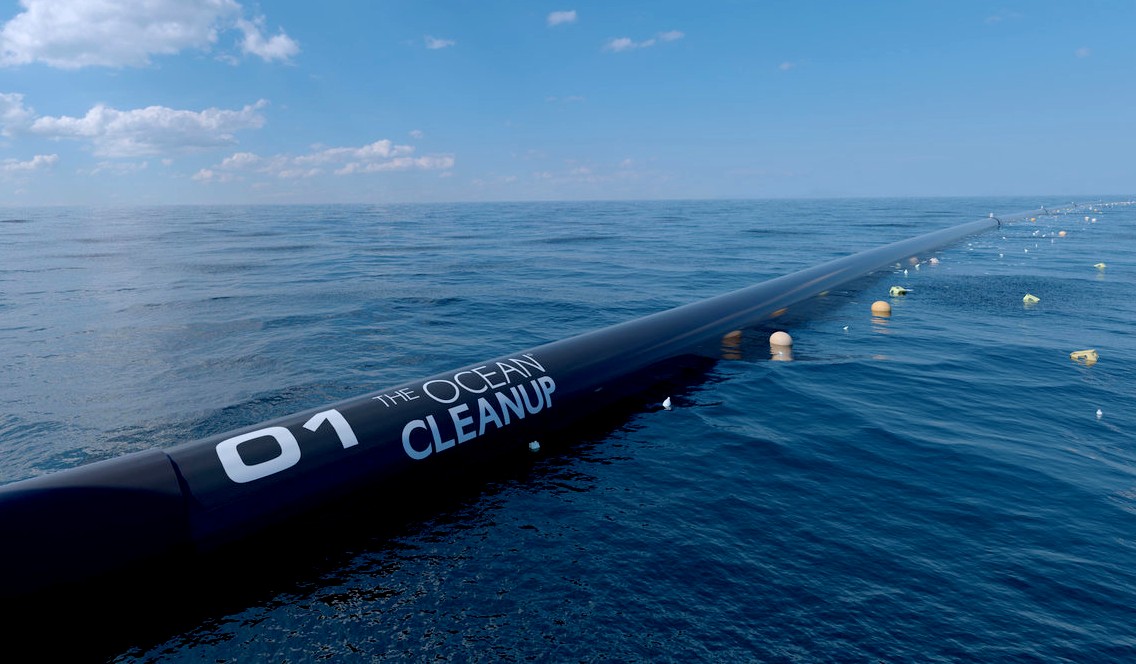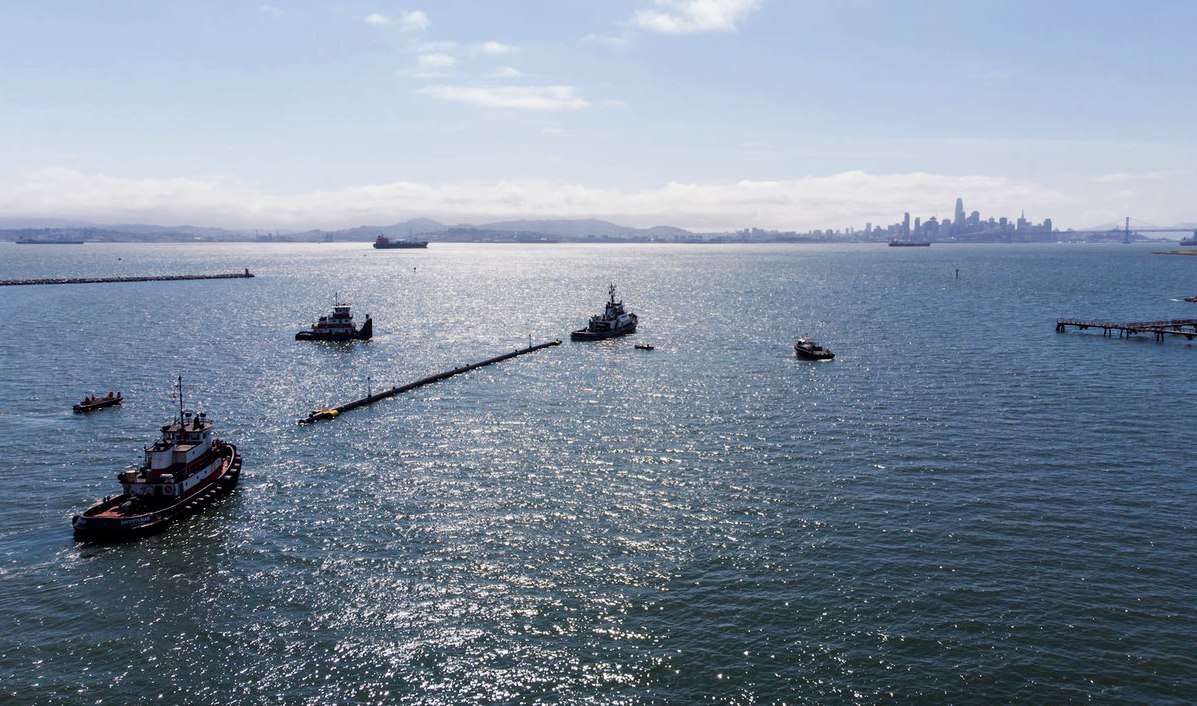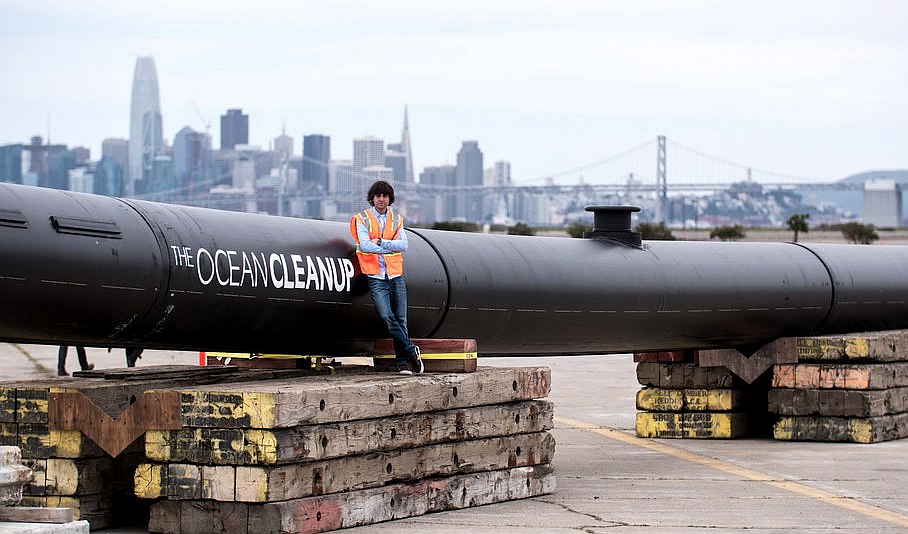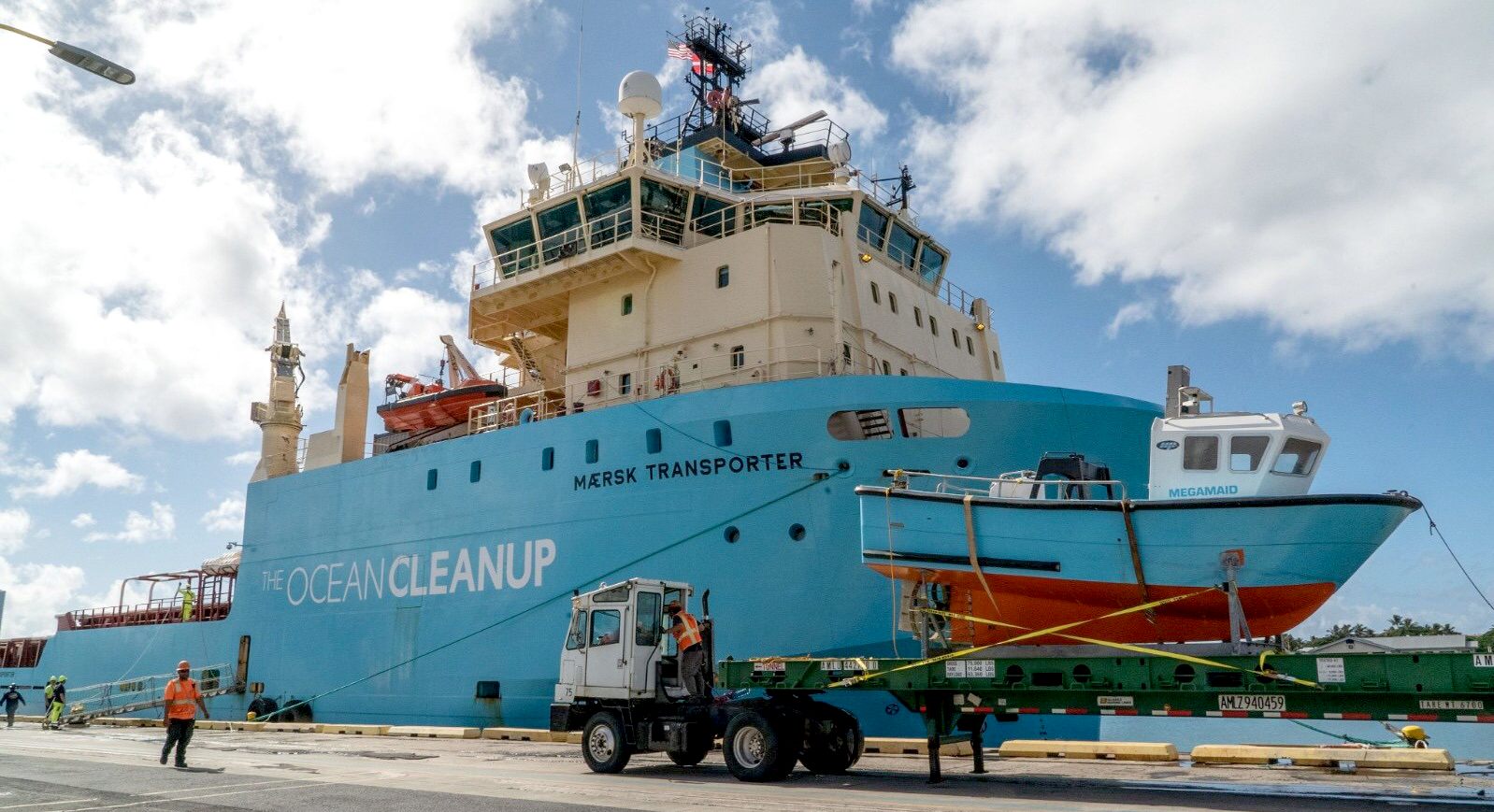|
2020 THE OCEAN CLEANUP PROJECTS
PLEASE USE OUR A-Z INDEX TO NAVIGATE THIS SITE
|
|
It will be interesting to see the results obtained from the sea trials in 2019. We are sure there is bound to be ongoing development. Perhaps we might see a small fleet deployed? The one thing we are not privy to is the quantity and makeup of the plastic collected. Such data will be telling.
PILOT MARINE LITTER PICKER - This machine is essentially a 16 meter version of the 44 meter SeaVax. It is the only design in the world capable of extracting micro plastics from rivers at the time of writing. In this diagram we are looking through the superstructure. We can see a boom ahead of the cleaning head on the right, guiding litter into the filtration head, where it is lifted up into the large storage chamber, then carried to a harbour for offloading. The vessel is designed to navigate itself to a designated location, with input from human operators as may be required, where a dockside treatment or container storage system allows speedy turnarounds. Copyright © diagrams 21 November 2019. All rights reserved, Cleaner Ocean Foundation Ltd.
Meantime, it says a lot that the Cleanup Project have changed tack to look at cleaning rivers, this time with a concept that is not a hundred miles from the SeaVax plastic cleaner (except that SeaVax is mobile), that was first shown in London in 2015, but is more or less a derivation of the twin hulled barge in Baltimore harbour, known as Mr Trash, complete with booms and solar power.
NNN
OCTOBER 2 2019
We think that the public would like to know how much plastic is collected and how much was the total cost in diesel fuels to be able to calculate the boom drift project's carbon footprint.
The Ocean Cleanup is non-government engineering environmental organization based at Delft, Netherlands, that develops technology to extract plastic pollution from the oceans.
Boyan Slat is not alone in the fight against ocean plastic. These emerging technologies could all play a part in containing the mountain of plastic that is accumulating on the oceans floors, by recovering floating debris before it sinks. New ideas are welcomed.
PROJECT HISTORY 2012 - 2021
2021 - Qualified success Sept 16 (Reuters)
OCEAN CLEANUP PROJECTS
* Aliance to end Plastic Waste * Boyan Slat's ocean booms * 4Ocean recycled plastic bracelets * Seabin * SeaVax autonomous drones
LINKS & REFERENCE
2 October 2019 https://nnn.com.ng/ocean-cleanup-project-scoops-up-first-batch-of-plastic-in-pacific/ https://theoceancleanup.com/ 8 September 2018 The World’s First Ocean Cleanup System Launched from San Francisco 22 March 2018 Great Pacific Garbage Patch Growing Rapidly, Study Shows 21 December 2017 Research Shows How Plastic at Sea Turns into Toxic Fish Food 7 June 2017 First Estimate to Quantify Global Plastic Input from Rivers into Oceans 11 May 2017 The Ocean Cleanup Announces Pacific Cleanup to Start in 2018
WIND
AND WAVES
-
The floating boom systems are designed to capture plastics ranging from small pieces just millimeters in size, up to large debris, including massive discarded fishing nets (ghost nets), which can be tens of meters wide.
|
|
|
ABS - BIOMAGNIFICATION - CANCER - CARRIER BAGS - COTTON BUDS - DDT - FISHING NETS HEAVY METALS - MARINE LITTER - MICROBEADS - MICRO PLASTICS - NYLON - OCEAN GYRES - OCEAN WASTE PACKAGING - PCBS - PET - PLASTIC - PLASTICS - POLYCARBONATE - POLYSTYRENE - POLYPROPYLENE - POLYTHENE - POPS PVC - SHOES - SINGLE USE - SOUP - STRAWS - WATER
PLEASE USE OUR A-Z INDEX TO NAVIGATE THIS SITE
|
|
|
This website is provided on a free basis as a public information service. copyright © Cleaner Oceans Foundation Ltd (COFL) (Company No: 4674774) 2021. Solar Studios, BN271RF, United Kingdom. COFL is a company without share capital.
|
